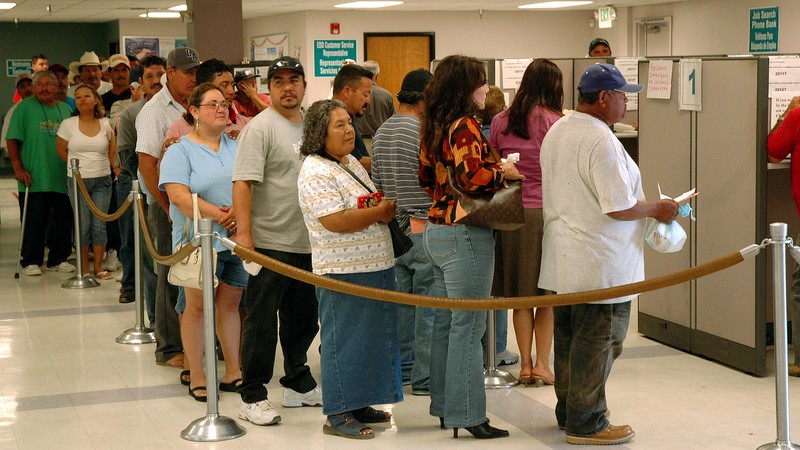
Thousands of Californians continue to file for unemployment benefits. Michael Raphael / Wikimedia Commons Public Domain
Federal extended unemployment benefits known as PUA—Pandemic Unemployment Assistance—as well as the $300 per week “boost” added to unemployment benefits as part of the $1.9 trillion COVID relief package signed by President Joe Biden in March, will run out for workers across the country on Sept. 4.
In California, however, unemployment insurance filings remain at high levels. For the week ending July 10, new unemployment applications were up 30 percent from January and February of 2020, according to a Mercury News report by George Avalos. Those were the last two months before business closures and stay-at-home orders went into effect, as the state attempted to mitigate the spread of the COVID coronavirus.
During those final pre-COVID months, new UI applications averaged 44,800 per week in the state. But last week, 58,400 out-of-work Californians applied to receive unemployment benefits for the first time. That number was actually down by 450 from the previous week, despite remaining well above pre-pandemic levels.
Nationally, however, new unemployment claims reached a new pandemic-period low, with 360,000 new filings, down 26,000 from the week ending July 3. Economic forecasters have been positively giddy about the nationwide recovery. According to a report by U.S. News and World Report, many economists predict that the economy will grow by 7 percent this year—which, if it happens, would make 2021 the biggest boom year since 1984.
So what is going on in California? Reflecting a national trend, the state has seen two different economic recoveries: one for high-wage workers, the other for middle- and low-income earners. According to data compiled by the site Track The Recovery, high earners, those earning above $60,000 per year, have now reached a slightly higher level of employment than they were at prior to the pandemic taking hold. But employment among lower-earners remains way down.
The same phenomenon is occurring throughout the United States. By the end of May, the most recent date in the Track the Recovery database, workers who make $60,000 or more have seen their overall employment numbers rise to 7.4 percent over pre-pandemic levels. Workers who make $27,000 per year or less, on the other hand, remain a whopping 21 percent below where they were before the pandemic.
According to data cited by the Mercury News report, the heart of the problem appears to be small business, which remains in deep trouble in California. Small business revenues are down 43.4 percent compared to January of 2020. Openings of new small businesses are down 51.9 percent in that same time span.
Short articles summarizing reporting by local news sources with linkbacks to the original content.